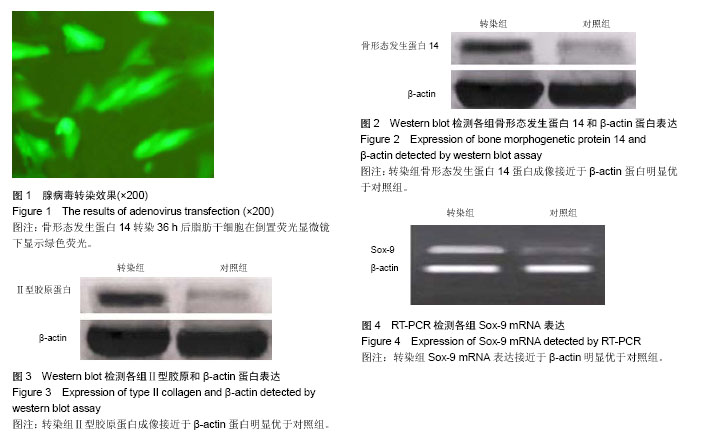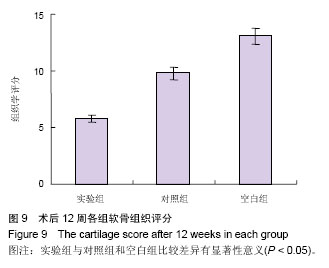| [1] Counsel PD, Bates D, Boyd R, et al. Cell therapy in joint disorders.Sports Health. 2015;7 (1): 27-37.
[2] Smith GD, Knutsen G, Richardson JB.A clinical review of cartilage repair techniques.J Bone Joint Surg Br. 2005;87(4): 445-449.
[3] Mithoefer K, Saris DB, Kon E,et al.Guidelines for the Design and Conduct of Clinical Studies in Knee Articular Cartilage Repair: International Cartilage Repair Society Recommendations Based on Current Scientific Evidence and Standards of Clinical Care. Cartilage.2011; 2(2):100-121.
[4] Kon E, Delcogliano M, Filardo G,et al.Orderly osteochondral regeneration in a sheep model using a novel nano-composite multilayered biomaterial.J Orthop Res. 2010;28(1):116-124.
[5] 袁虹,张解元,张荣明. BMP-14 转染脂肪来源干细胞后与软骨细胞共培养的实验研究[J].中国修复重建外科杂志,2012,27(3): 349-353.
[6] Vacanti CA.The history of tissue engineering.J Cell Mol Med. 2006;10(3):569-576.
[7] Lindroos B, Suuronen R, Miettinen S.The potential of adipose stem cells in regenerative medicine.Stem Cell Rev. 2011;7(2): 269-291.
[8] Vinardell T, Sheehy EJ, Buckley CT,et al.A comparison of the functionality and in vivo phenotypic stability of cartilaginous tissues engineered from different stem cell sources.Tissue Eng Part A. 2012;18(11-12):1161-1170.
[9] Patricia Zuk.Adipose-Derived Stem Cells in Tissue Regeneration: A Review. ISRN Stem Cells.2013;10 (11):372- 391.
[10] Merceron C, Portron S, Masson M,et al.The effect of two- and three-dimensional cell culture on the chondrogenic potential of human adipose-derived mesenchymal stem cells after subcutaneous transplantation with an injectable hydrogel.Cell Transplant. 2011;20(10):1575-1588.
[11] Colnot C.Cell sources for bone tissue engineering: insights from basic science.Tissue Eng Part B Rev. 2011;17(6):449- 457.
[12] Huey DJ, Hu JC, Athanasiou KA.Unlike bone, cartilage regeneration remains elusive.Science. 2012;338(6109): 917-921.
[13] Catherine Baugé, Nicolas Girard, Eva Lhuissier, et al. Regulation and Role of TGFβ Signaling Pathway in Aging and Osteoarthritis Joints.Aging Dis. 2014;5(6):394-405. |





